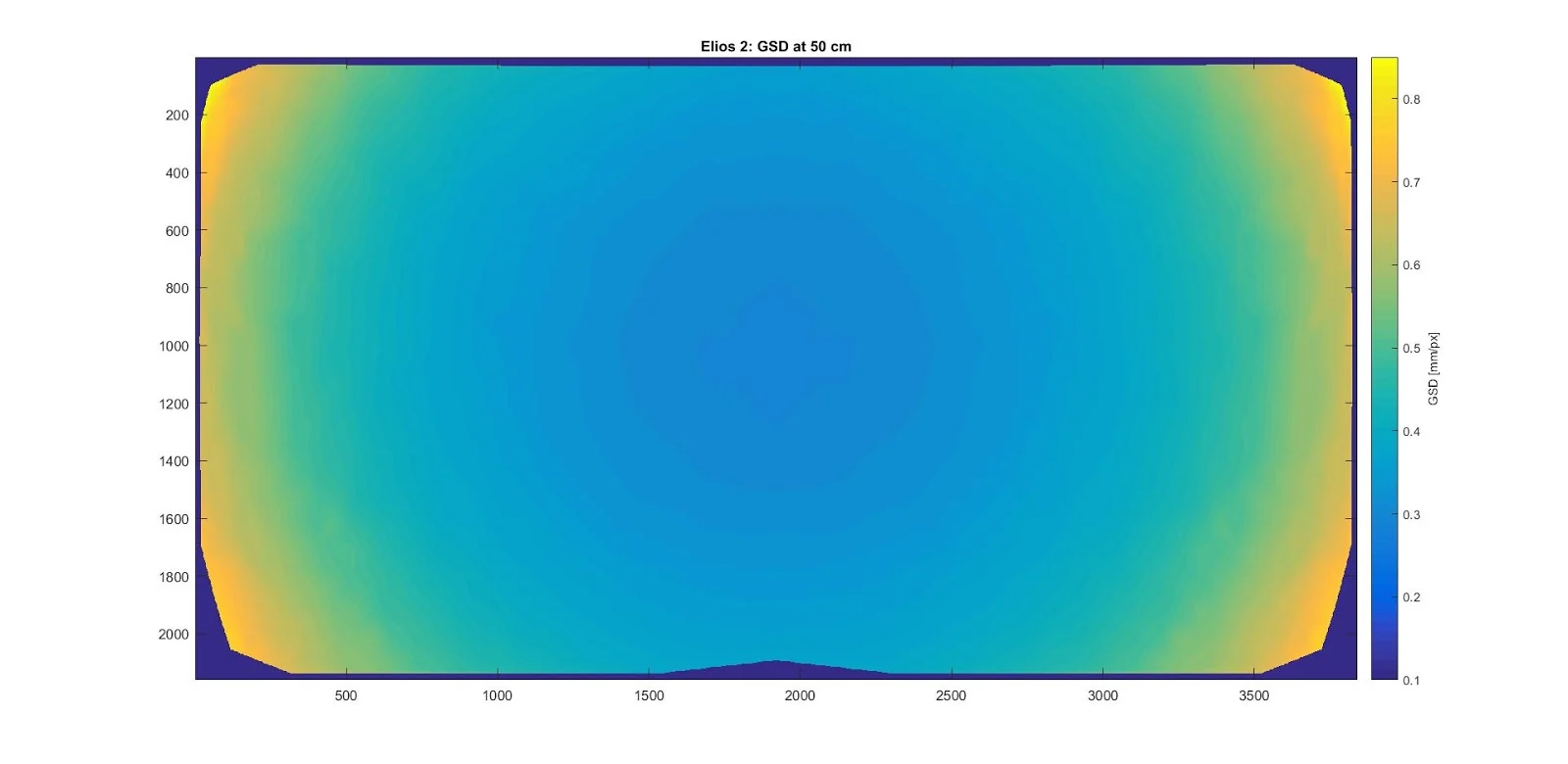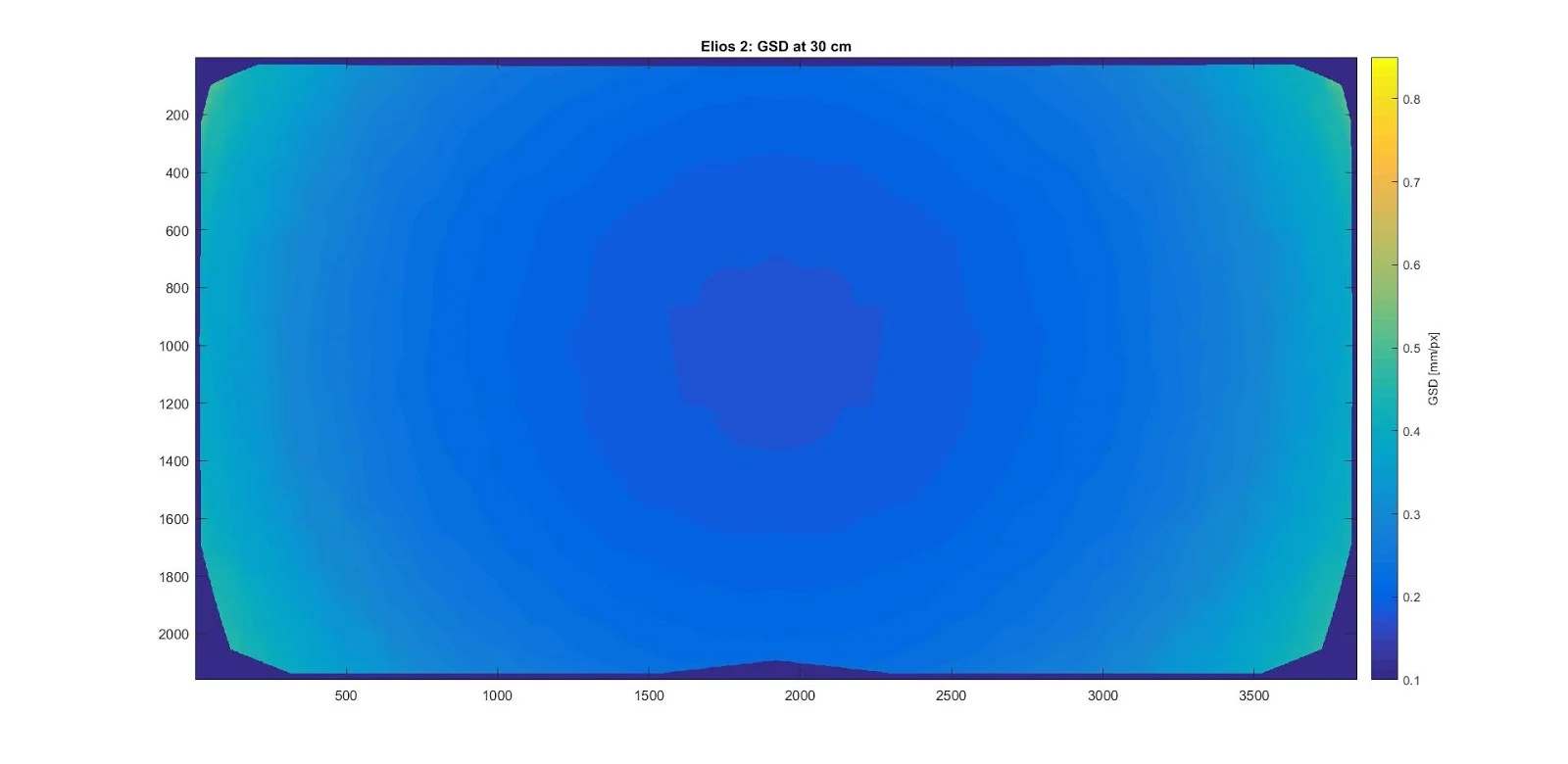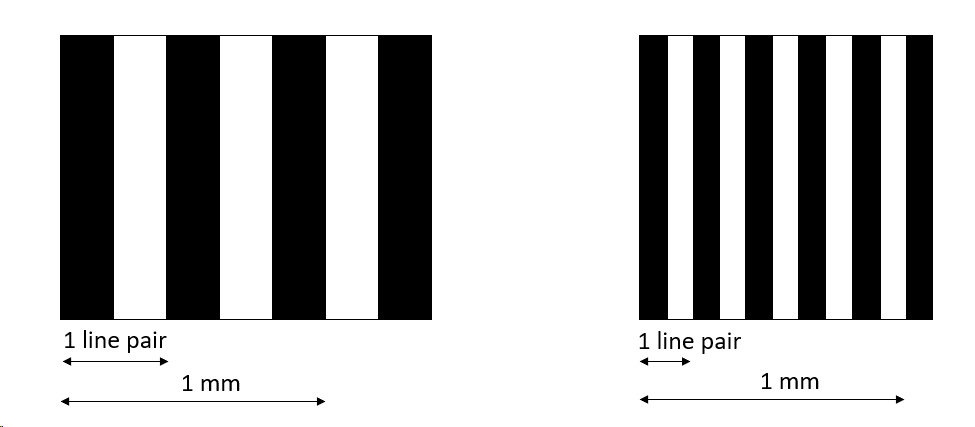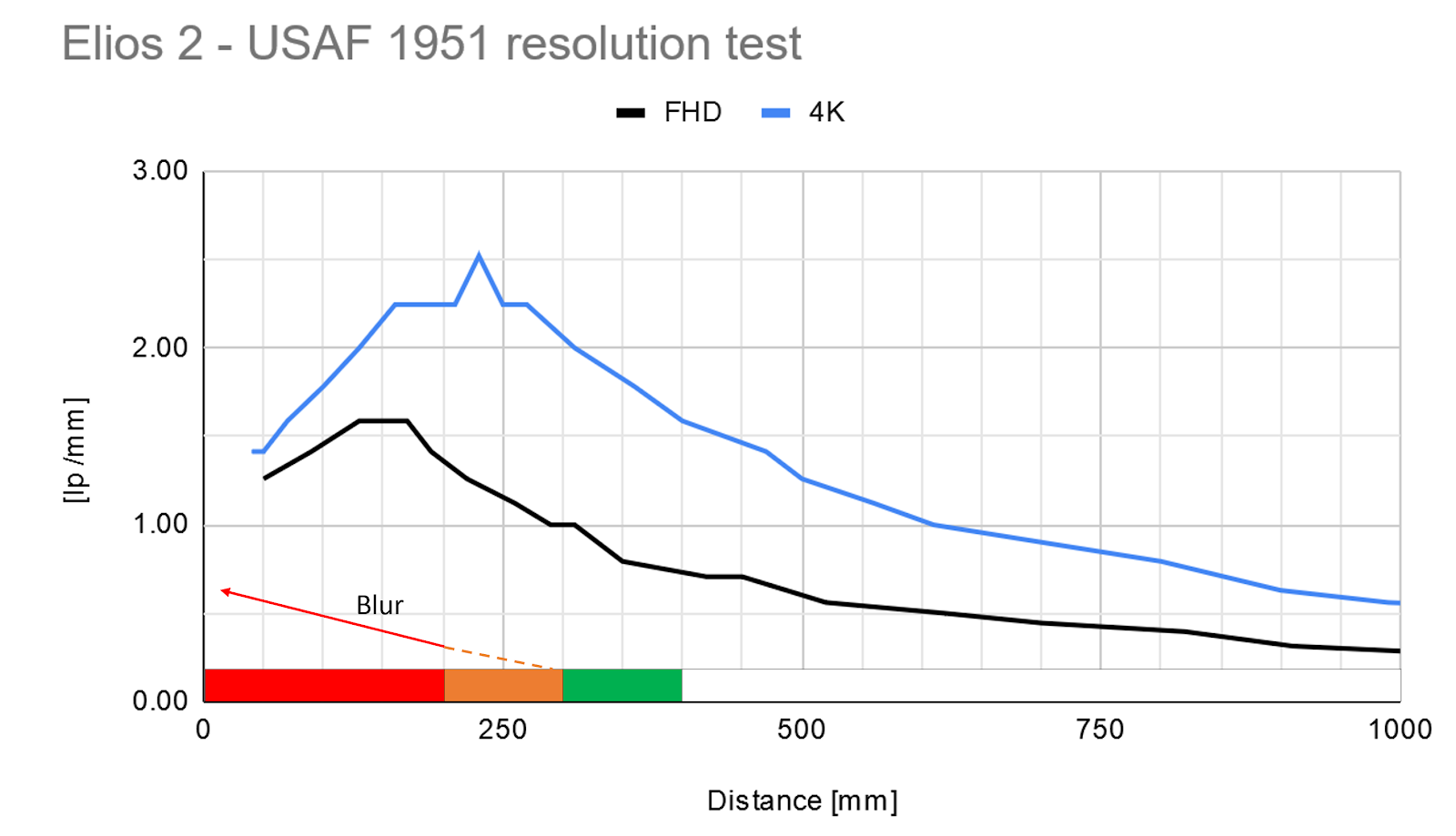Drones Camera Resolution: Three Metrics You Should Know About
Pixel Resolution
The pixel resolution refers to the number of pixels that make up an image. It is usually expressed in terms of width by height (like 1920 x 1080) or as the total number of pixels (e.g., 2.1 MP for 1920 x 1080).| Elios 1 Pixel Resolution | ||
| FHD video | 1920 x 1080 | 2.1 MP |
| Elios 2 Pixel Resolutions | ||
| FHD video | 1920 x 1080 | 2.1 MP |
| 4K video | 3840 x 2160 | 8.3 MP |
| Photo | 4’000 x 3’000 | 12 MP |
While pixel resolution tells us the size of the image, it doesn’t directly indicate how large an object appears or how much detail can be seen. For that, we need other metrics like ground sampling distance and spatial resolution.
| Metric | Application |
| Pixel resolution | Data sharing, storage, display, and digital zoom |
| Ground sampling distance (GSD, mm/px) | Photogrammetry and measurements |
| Spatial resolution (lp/mm) | Detecting small objects and details |
Ground Sampling Distance
The ground sampling distance (GSD) measures the real-world size represented by each pixel in the image, typically in millimeters per pixel. A GSD of 1mm/px means one pixel corresponds to 1mm on the ground. A smaller GSD means more detail can be captured. However, GSD depends on the distance between the camera and the subject. The closer the camera gets, the better the GSD becomes. With a fisheye lens, GSD also varies across the image—objects near the center have a smaller GSD than those at the edges.

These images show how GSD changes with distance and position within the frame for the Elios 2.
GSD is crucial for photogrammetry, but it doesn't account for image quality factors like blur or noise. Even with the same GSD, image quality can vary based on lighting, motion, and focus.
Spatial Resolution
The spatial resolution refers to the smallest detail that can be distinguished in an image. Unlike GSD, it considers factors like blur, noise, contrast, and image processing. Spatial resolution is often measured in line pairs per millimeter (lp/mm), which describes how many alternating black and white lines can be resolved.
Left: 2.5 lp/mm. Right: 5 lp/mm
A spatial resolution of 2 lp/mm means you can see two black and two white lines per millimeter. Higher frequencies will appear as gray because the lines blend together. This is known as not being "resolved."

The smallest visible element in this image is group 1, element 1 of the USAF 1951 chart.
Spatial resolution is highest in the center of the image and decreases toward the edges. It's also affected by focus and depth of field. For the Elios 2, optimal spatial resolution is achieved when the object is 15–30 cm away. Flying too close can cause blur, reducing resolution.

To ensure the best image quality, it’s important to fly at the correct distance. The Elios 2 has a distance lock feature and Cockpit app to monitor the drone-to-object distance and GSD. The color code helps pilots understand the spatial resolution quality in real-time:
| Distance | Color | Meaning | |
| > 40 cm | Â | White | Going closer improves resolution |
| 30 to 40 cm | Â | Green | High resolution, sharp image |
| 20 to 30 cm | Â | Orange | Highest resolution - but blurry |
| < 20 cm | Â | Red | Image is very blurry, low resolution |
Keep in mind that screen size affects how blur is perceived. On small screens, images may look sharper even if they’re blurry. For the best results, stay at least 30 cm away from your target.
Other factors that influence image quality include:
- Good lighting to reduce ISO and exposure time
- Stable flight to avoid motion blur
- Clean lens to prevent blurriness and glare
Beyond Resolution
While spatial resolution is essential for detecting and analyzing details, it's just one part of the equation. Other elements like lighting, color accuracy, and viewing angles also play a major role. The Elios 2’s compact design and collision tolerance allow it to get close and capture detailed views from multiple angles. Its advanced lighting system enhances 3D visibility, making it easier to spot cracks or imperfections. With practice, you’ll learn to balance navigation and data capture, ensuring high-quality footage every time. If you’ve tested different tools or have feedback about the Elios 2, feel free to share your thoughts!Flexible Fabric Compensator,Flange Device Cover,Flange Insulation jackets,Non-Metallic Expansion Joints
Taixing Yingxing Composite Material Co.,Ltd , https://www.ptfecnyx.com
